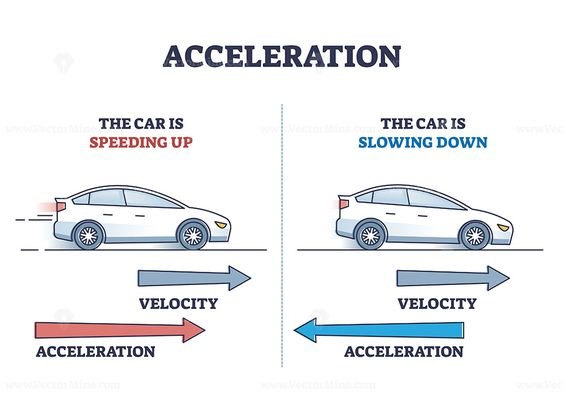
Chapter 3: Motion and Force
Motion and Force
Rest and Motion
Rest:
“If a body does not change its position with respect to some observer then it is in a state of rest.”
Motion:
“If a body changes its position with respect to some observer then it is in a state of motion.”
Motion and Force are relative to each other.
Terms Related to Motion
Distance:
“Length of the path between two points.”
- Scalar quantity.
- ( S = v \cdot t )
- Magnitude of displacement equals distance.
Displacement:
“The change in position of a body from the initial to the final point.”
- Vector quantity.
- ( \Delta x = v \cdot t )
- In a straight line, distance and displacement coincide with each other.
Speed:
“Distance covered by a body per unit time.”
- Scalar quantity.
- ( v = \frac{S}{t} )
- Magnitude of velocity is equal to speed.
Velocity:
“Time rate of change of displacement of a body.”
- Vector quantity.
- ( v = \frac{\Delta x}{t} )
For more information about Motion and Force Click the link below:
Types of Velocities
- Average Velocity
- Relative Velocity
- Uniform Velocity: If the instantaneous velocity and average velocity are the same, then the body is moving with uniform velocity.
- Variable Velocity
- Instantaneous Velocity
Acceleration
Acceleration:
Rate of change of velocity with respect to time.
- Vector quantity.
- ( a = \frac{\Delta v}{t} )
- If the velocity of the body decreases, there is negative acceleration called deceleration.

Types of Acceleration:
- Average Acceleration
- Instantaneous Acceleration
- Uniform Acceleration
- Variable Acceleration
For reading Physics Punjab Textboard Click on the link below:
Additional Topics
- Equation of Uniformly Accelerated Motion
- Newton’s Laws of Motion
- Momentum
- Elastic and Inelastic Collision
- Force Due to Water Flow
- Momentum and Explosive Forces
- Rocket Propulsion
- Projectile Motion
- ECAT Past Questions
I appreciate the detailed and well-organized content on your site.
We’re a group of volunteers and starting a new scheme in our community. Your site offered us with valuable information to work on. You’ve done a formidable job and our entire community will be thankful to you.